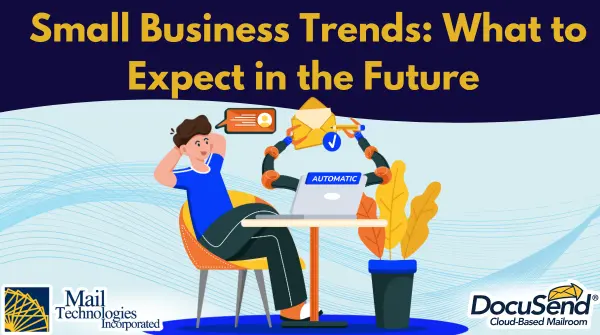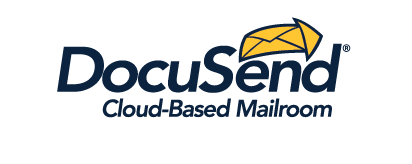Small Business Trends: What to Expect in the Future

The future of small business—and the growing impact of new technologies—is incredibly exciting! But staying ahead means every current business owner, as well as anyone who is only planning to become one, should remain adaptable to new trends. If you’ve been keeping an eye on the world of services and noticing how quickly things evolve, you know that what’s hot today might be outdated tomorrow. One minute, everyone’s talking about the latest social media hack and how social media platforms have become a massive sales machine that everyone should take advantage of, and suddenly, AI is running the show. So, what’s next? What trends should small businesses be watching (or jumping on) to stay ahead and keep up with the spirit of the times? Let’s break it down.
AI Is Here to Stay—But It Won’t Replace You
Yep, AI is everywhere now. From chatbots handling customer service to tools that generate marketing content, artificial intelligence is making life easier. But the good news is: It’s not about replacing humans—it’s about working smarter and saving your energy. Small businesses that use AI to automate many tasks will have more time to focus on their core business. Examples of these tasks are: implementing voice assistants and AI-powered virtual shopping assistants, answering customers’ FAQs with chatbots that provide 24/7 customer support, using AI-driven analytics tools that can track customer behavior, and even creating social media posts.
Customers Want Personalization—But Not Creepiness
You know that feeling when you search for something online, and suddenly, it follows you everywhere? Yeah, customers don’t love that. But they do love businesses that make them feel special. Personalized emails, customized product recommendations, and remembering past purchases (without being too invasive, of course) will make a big difference in keeping your brand the first that pops into mind when they are contemplating new purchases.
Sustainability Matters More Than Ever
People are paying attention to where they spend their money. More customers want to support businesses that care about the environment—whether that means using eco-friendly packaging, sourcing sustainable materials, or giving back to green initiatives. One way businesses can make a difference is by reducing their carbon footprint through digital solutions like DocuSend’s cloud-based mailroom.
Social Commerce Will Continue Blooming
When you are selling something to a wide audience, you need to be on social media—period. Have you ever been scrolling through Instagram or TikTok and then you saw a product you just had to buy? That’s social commerce in action. More people are shopping directly through social media platforms, so businesses that invest in websites, Instagram Shops, or TikTok Shopping will have a huge advantage.
Live shopping is booming, especially on platforms like Instagram, Facebook, and TikTok. Businesses can go live, showcase their products, answer questions in real time, and drive instant purchases. This immersive process creates an experience similar to in-person shopping but with the convenience of staying at home.
Sales don’t just come from first-time buyers—loyal customers are even more valuable. Businesses that interact with their followers, respond to comments, and share behind-the-scenes content build stronger relationships that keep customers coming back for more.
Social Proof and Customer Reviews
People want to see real experiences before they buy. Reviews, testimonials, and user-generated content (for example, the unboxing videos) can act as proof that a product is worth the money. If more customers see others excited about something, they’re more likely to purchase it themselves.
Virality means instant sales boost. Ever seen a product blow up on TikTok and then sell out, like it happened with Dubai chocolate, or Stanley cups, or that viral pink sauce? That’s the power of virality. Businesses that create engaging, trend-worthy content (or get lucky with user-generated content) can see a massive spike in demand.
Flexible Work
Remote work isn’t just for tech giants anymore. Even small businesses may be offering flexible work options. It can mean letting employees work from home a few days a week or hiring freelancers to fill in specialized roles that don’t necessarily require a physical presence at the workplace. A designer can work remotely on new product concepts, packaging, or branding materials. A web developer managing the company’s e-commerce site could be working from another city. Meanwhile, a freelance social media manager might handle content creation and customer engagement from their home office. While more and more people opt for remote, offering flexibility can help you attract and keep great talent.
Subscription Services Are Growing
From the delivery of ready-made healthy meals to personalized skincare boxes, subscription-based businesses are thriving. If your product or service can be turned into a recurring personalized offer, you might be sitting on a goldmine. These stressful days, with not much free time left after work and errands, customers love the convenience, and businesses love the steady income—it’s a win-win!
Cloud-Based Services
Cloud-based services are great helpers in running a small business efficiently. Taking advantage of cloud technology can help entrepreneurs streamline processes, significantly cut down on operational costs, eliminate the need for their own equipment and software, and boost collaboration. With cloud-based tools, businesses can scale up quickly without investing in developing their own technologies. The operations can be flexibly managed from anywhere. For example, DocuSend’s cloud-based mailroom provides the easiest way to handle your USPS business mailing online. It eliminates the need for printers, metering equipment, paper, ink, stamps and envelopes, and manual labor. You simply upload any number of your documents to the cloud—whether it’s invoices, contracts, statements, late notices, marketing materials, or other important papers—and they’ll be printed and sent via USPS, without any contracts or required minimums, monthly subscriptions, or upfront investment.
Another great example is cloud-based analytic tools that help small businesses track website traffic, sales trends, and customer behavior. Platforms like Google BigQuery, AWS Redshift, and Snowflake offer powerful data warehousing and analytics capabilities. Microsoft Power BI, Tableau, and Looker help visualize and interpret data for actionable insights. Tools such as Mixpanel, Amplitude, and Heap Analytics specialize in customer behavior tracking and allow businesses to refine their marketing and product strategies. With these tools, you can make smarter decisions about marketing strategies and product offerings, tailoring them to what your customers are actually looking for. The insights they provide are invaluable for growing your business.
Cloud-based project management tools like Trello or Asana help keep your team organized, whether they're working in the office or remotely. You can easily assign tasks, track progress, and communicate all in one place, boosting your team’s productivity.
If you want to find out more about the impact of cloud-based technologies, how safe they are and how they work, read this article.
Local Communities Matter—Even Online
Even in a digital world, people love supporting local businesses. If you run a small shop, cafe, or service-based business, make sure you're listed on Google My Business, Yelp, and local directories. Engaging with your local community (both online and offline) can set you apart from big corporations. Hosting local events like product launches, workshops, or community clean-up days, or organizing fun and interactive contests such as a social media challenge where participants can win a prize, helps you create memorable experiences that encourage community support. These events can also be promoted through social media and local event platforms.
Contributing to an Inclusive Future
Ensuring that your space is welcoming to everyone can set you apart. It doesn’t matter if you’re running a website or a physical shop. For online platforms, this means designing your website to be accessible to users of all abilities. It is achievable by incorporating critical features: alt text for images, easy navigation, clear font choices, and sufficient color contrast. In physical shops, it’s about creating an environment that accommodates everyone (providing ramps and clear signage, preparing staff for inclusive customer service). It opens your business to a wider audience, ensuring that every customer feels valued.
To sum up, staying ahead of the curve means embracing the right tech innovations and understanding the social trends that are shaping the future of business. By streamlining their operations with technologies, having a personalized approach to customers, and adapting to rapid changes, small businesses can not only survive but also thrive in the upcoming. We hope these insights have inspired you and will help you stay ahead and future-proof your business. Share your thoughts in the comment section below—we’d love to hear how you’re preparing for the future.

